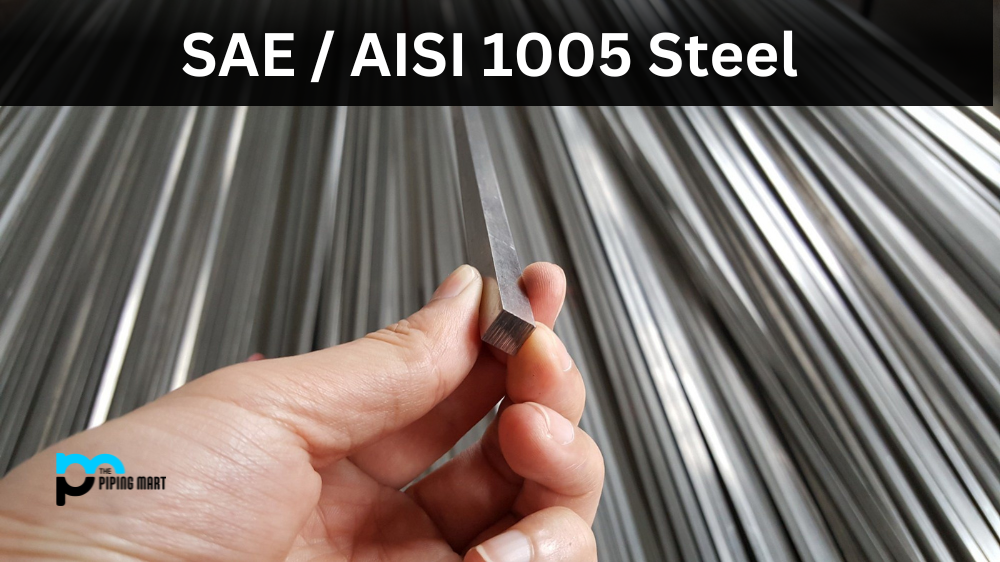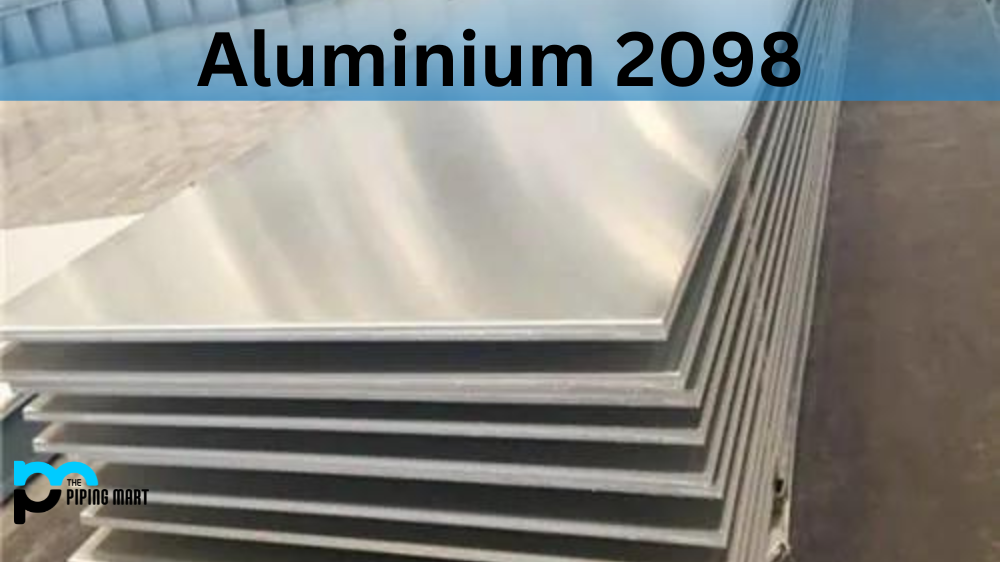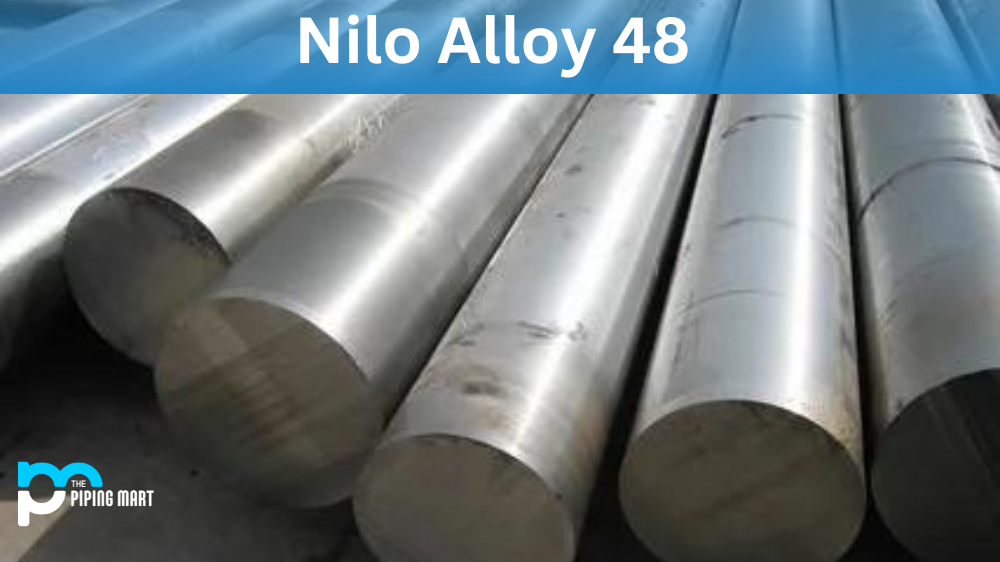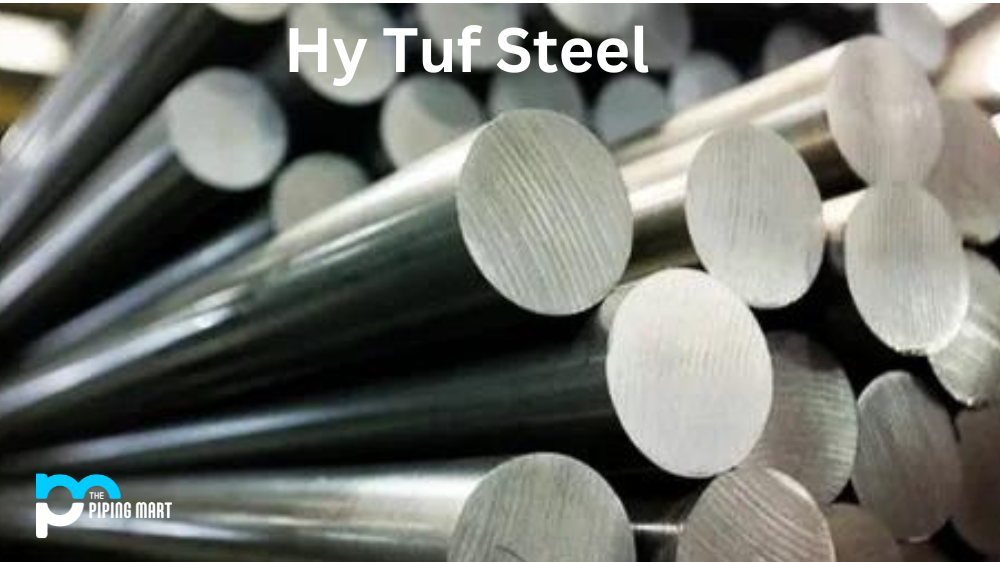What is SAE – AISI 1005 Steel?
SAE / AISI 1005 steel is a low-carbon alloy often used in automotive and industrial applications. It’s known for its excellent tensile strength, weldability, and good corrosion resistance, heat resistance, and heat treatment characteristics. This guide will explore the physical, chemical, mechanical, and application properties of SAE / AISI 1005 steel.
What Forms is AISI 1005 Steel Available at Piping Mart?
- Bar
- Bolt
- Pipe
- Screw
- Tubing
- Valves
- Washers
- Flanges
- Fasteners
- Electrodes
- Stud Bolts
- Sheet Plates
AISI 1005 Steel Chemical Properties
The chemical composition of SAE Steel 1005 consists mostly of iron with trace amounts of carbon—usually no more than 0.25%. This low carbon content makes it ideal for applications such as springs or wires where strength isn’t a major concern, but low weight is important.
| Element | Content (%) |
| Iron, Fe | 99.5 – 100 |
| Manganese, Mn | 0.35 |
| Carbon, C | 0.060 |
| Sulfur, S | 0.050 |
| Phosphorous, P | 0.040 |
SAE – AISI 1005 Steel Physical Properties
AISI 1005 has a density of 7.8g/cm3 (0.278 lb/in3). Its melting temperature is 1280°C (2336°F), and its thermal conductivity is 31 W/(mK). UNS G10050 also has a modulus of elasticity of 200 GPa (29 million psi) and an electrical resistivity of 0.14 μΩ·m at 20°C (68°F).
| Properties | Metric | Imperial |
| Density (composition 0.06% C, 0.38% Mn, 0.01% Si, annealed at 925°C) | 7.872 g/cm³ | 0.2844 lb/in3 |
SAE 1005 Steel Mechanical Properties
AISI 1005 Steel has good mechanical properties, including a yield strength ranging from 280 to 380 MPa (41 to 55 ksi), an ultimate tensile strength between 310 to 430 MPa (45 to 62 ksi), and an elongation rate between 30% to 40%. AISI steel 1005 also has good fatigue characteristics with an endurance limit of around 180 MPa (26 ksi).
| Mechanical Properties | Metric | Imperial |
| Modulus of elasticity | 190-210 GPa | 27557-30458 ksi |
| Bulk modulus (typical for steel) | 140 GPa | 20300 ksi |
| Shear modulus (typical for steel) | 80 GPa | 11600 ksi |
| Poissons ratio | 0.27-0.30 | 0.27-0.30 |
SAE – AISI 1005 Steel Equivalent
Other designations that are equivalent to the AISI 1005 carbon steel include the following:
- ASTM A29
- ASTM A510
- MIL S-11310
- SAE J403
- SAE J412
SAE – AISI 1005 Steel Specifications
- ASTM B446 / ASME SB446
- ASTM B443 / ASME SB443
- ASTM B564 / ASME SB564
- ASTM F467 / F467M
- ASTM F468 / F468M
- AMS 5666
- BS 3076
SAE – AISI UNS G10050 Steel Uses
Due to its excellent mechanical properties, weldability, and corrosion resistance, G10050 can be found in many automotive components, such as transmission shafts, drive shafts, axles, suspension components, and steering columns. Due to its high wear resistance, it’s also used in industrial applications like piping systems or tooling equipment.
Corrosion Resistance & Heat Treatment
When exposed to atmospheric conditions or other corrosive environments, such as salt water or acidic liquids, the rust-resistant qualities of SAE 1005 Steel make it ideal for outdoor applications like bridges or outdoor furniture where corrosion protection is needed. Heat treatment will increase the hardness level but should only be done when necessary due to the risk of cracking or warping the metal; when heat treated correctly, however, UNS G10050 can reach Rockwell hardness levels up to 50 HRC without any adverse effects on the material.
Conclusion
In summary, SAE/AISI1005 steel offers excellent strength with decent weldability and corrosion resistance at an affordable price point, making it perfect for automotive parts such as suspension components and drive shafts along with industrial applications like tooling equipment or piping systems that require durability over time without breaking your budget. Its low carbon content also makes it great for applications where lightweight but still strong materials are preferred, such as springs or wires, which need flexibility but still need some strength. With proper heat treatment, this alloy can even reach Rockwell hardness levels up to 50 HRC while still maintaining all its original qualities intact, making it one of the most versatile alloys available today!

Pipingmart is a B2B portal that specializes in metal, industrial and piping items. Additionally, we share the latest information and information about materials, products and various types of grades to assist businesses that are involved in this business.




